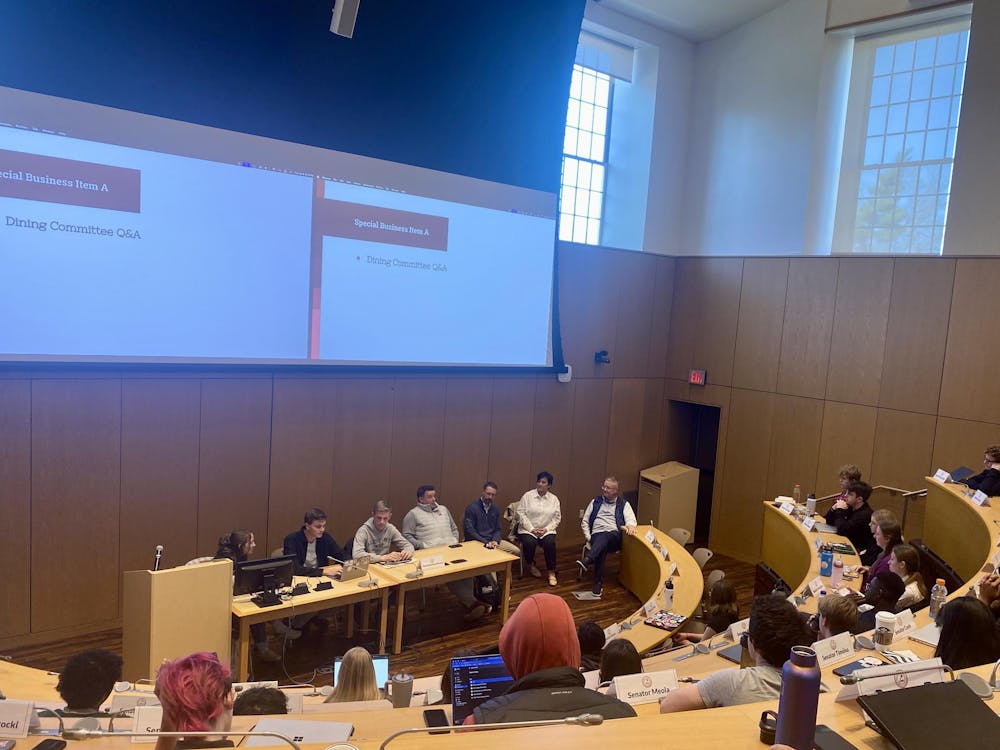For most Miami University students, the main way to stay in touch with professors outside of class is through email. For students of Erikamarie Wick, that’s not the case.
Wick, a professor in the Farmer School of Business, currently teaches business computing to first-year students. She asks them not to send her emails, but instead communicates via Slack.
“It was a personal decision based on my feedback from students stating that my largest issue was communicating in a timely manner,” Wick said. “I've had issues with my Miami email for years.”
According to research from New York University, the formality of emails can create a barrier that discourages students from reaching out to professors. In the professional world, 77 out of 100 Fortune companies rely on Slack correspondence, according to Slack statistics, and Inside Higher Ed has described Slack as the “new email.”
When students come to college, they’re greeted with constant reminders from professors, academic departments and student organizations about how important it is to stay on top of communication. With so many different communication channels to choose from, this can quickly become a challenge.
Wick explained that in addition to the functionality and simplicity of Slack, she has seen it foster collaboration between students, especially in online classes.
“I've found that it's also more effective in teaching online courses as well, as a point to get the question, answer and collaboration going between students,” Wick said.
However, not everyone uses Slack. Students who are working or doing an internship may be more likely to communicate on Microsoft Teams or Google Chat.
Mia Gagliano, a sophomore marketing major, said she uses the apps where everyone else is, even if she’s not a fan of them.
“A lot of communication applications are a matter of habit,” Gagliano said. “I personally dislike Snapchat, but that is the only way some people our age can be reached.”
Snapchat is still a popular option among college students, with groups on Miami’s campus like the Class of 2027 group allowing specific communities to stay connected and share a laugh. Instagram is also widely used, with more than 80% of college students on the platform.
Another useful tool a lot of student organizations utilize is Google Drive, which allows them to organize their assignments better. Sometimes, student organizations collect their members’ phone numbers and communicate via iMessage because of the more personal feel of messaging.
Enjoy what you're reading?
Signup for our newsletter
Although satisfied with Google Drive and email, Olive Abram, a sophomore sustainability and political science major, has been exposed to both GroupMe and Google Drive during her time in college. While email and Drive work for her to organize her assignments and communications, she dislikes GroupMe because of the inconsistency of notifications.
“The GroupMe search function is also inconsistent,” Abram said. “I feel like every time I try to search for people, it never gives me what I am looking for.”
For social and extracurricular activities, Abram said she prefers Discord, which allows for different voice and text chats in a server of people, connecting people of various interests and locations.
“I've been using it for years,” Abram said. “It's very user-friendly, servers can be highly customized for their purpose, and it's easily accessible on mobile and desktop.”
Bharat Kapoor, an international student from India, said that although none of his American friends use WhatsApp, he communicates with his friends and family from home with it. WhatsApp allows for international texting for free as long as users are connected to WiFi.
“It’s easy to use, and it’s free chat and free calls,” Kapoor said.
Kapoor said he has made some of his American friends install the application as he believes that, with a base of over 2 billion users, it’s a great platform to meet and connect with people from nearly all over the world.
In the sea of communication apps most students use every day, staying in touch has never been simpler — or more complex, whether it’s using LinkedIn to stay on top of professional networking or getting on Slack to ask when the next assignment’s due.




